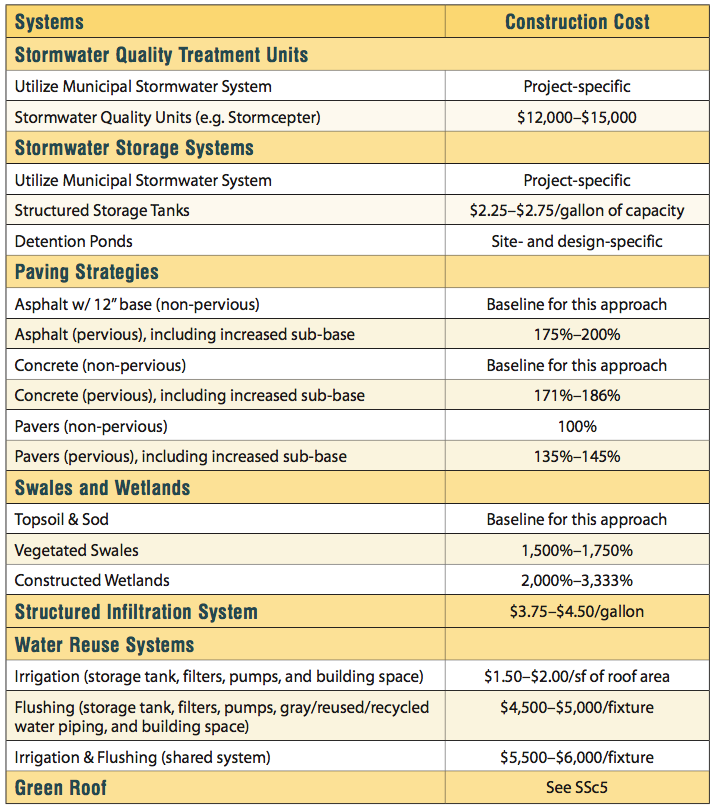The cost of this credit is project-specific.
This credit combines formerly separate LEED concepts of stormwater “quantity” and “quality” into one credit. It also uses the term “rainwater,” which connotes a natural resource, as opposed to a problem (stormwater) to be managed. LEED v4 requires low-impact development (LID) measures to manage rainwater.
Whether or not LEED requires measures that represent a cost premium will be project specific. Although it may be cheap to not do onsite stormwater management and just dump it into a municipal system, that approach is less and less commonly allowed. Some major U.S. municipalities require 100% onsite management. In these locations, LEED v4 would not represent a cost premium, and synergies with other LEED credits could lead to overall savings.
Even in cases where municipal requirements are less strict, conventional detention ponds can be expensive to engineer and build, while using up valuable land and not adding
a site amenity. Smart LID measures that rely on or mimic natural hydrology can be both cost-effective and add value to the project, while again offering synergies with other LEED credits.

Cost Synergies
LTc2: Sensitive Land Protection LTc3: High Priority Site
LTc7: Reduced Parking Footprint SSc1: Site Assessment
SSc2: Site Development—Protect or Restore Habitat SSc3: Open Space
WEp1/c1: Outdoor Water Use Reduction
WEp2/c2: Indoor Water Use Reduction
